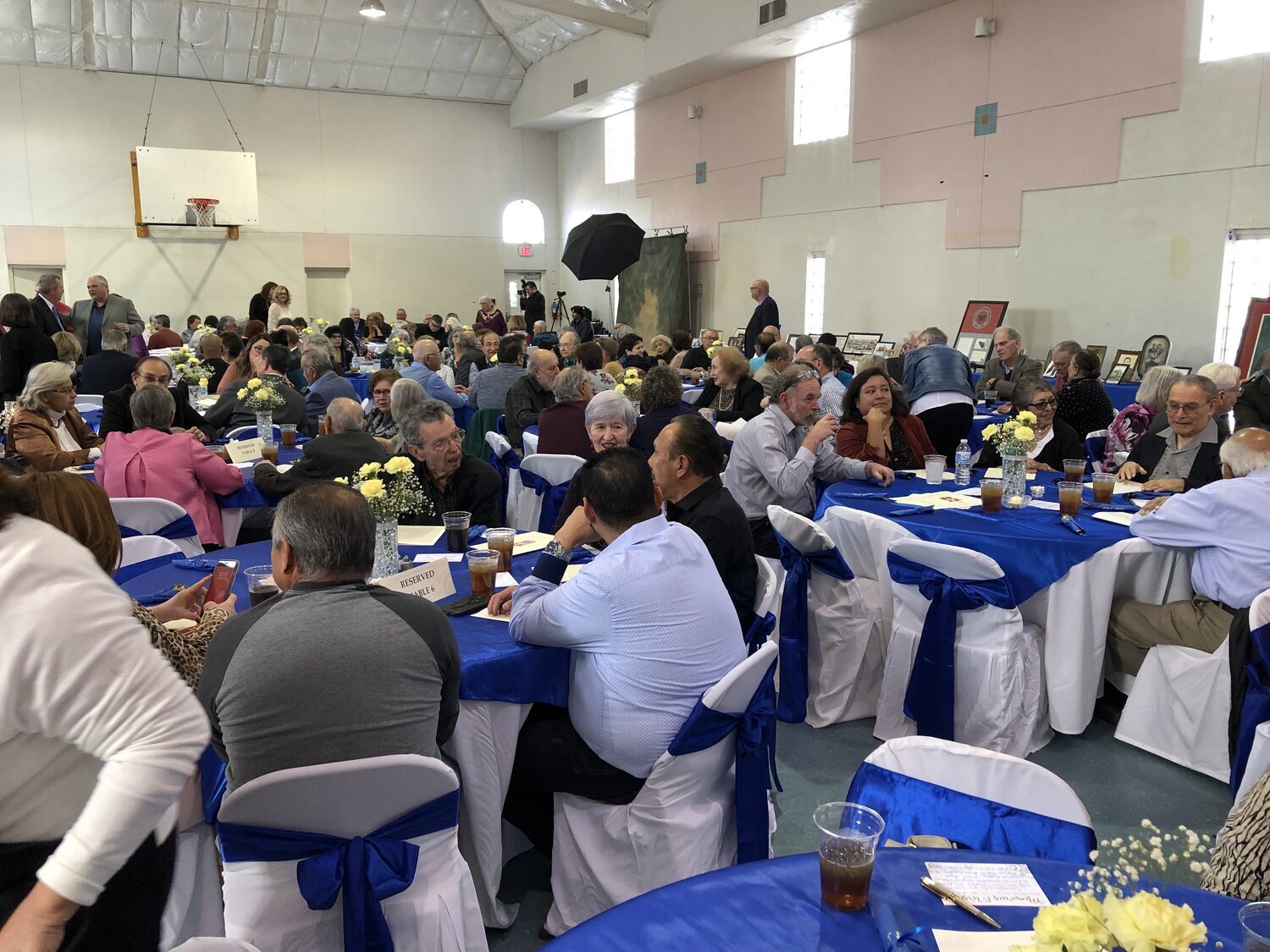The Gym, La Trinidad United Methodist Church, San Antonio, Texas
by Angela Tarango
On any given Sunday, the gym at La Trinidad United Methodist Church is filled with church and community members eating breakfast before and between the morning services. The aroma of breakfast tacos and strong coffee hits you when you walk in. The youth bounce basketballs off the hoops. A small group of deaf folks from a local group home sit and sign with the one church member who knows ASL. Despite the communication differences, they are always greeted warmly, with hugs and tacos.
La Trinidad UMC is a modest church building, located off of I-35 at the gateway of San Antonio’s historic West Side, an old neighborhood made up of mostly working class and working poor Mexican-Americans. From the freeway you can see the words “Templo Methodista Unida” emblazoned high up on the side of the building. The church sits across from a school, and a tortilla factory. It is three blocks from the city jail. When you leave the building in the afternoon, the smell of fresh tortillas wafts out. “The smell of Mexican-American Methodism” my undergraduate research assistant Jamiless once said to me. The smell of home.
The gym is a multifunctional building. Part gym, part cafeteria, part church hall, it is the heart of LTUMC. This past fall, a new roof was installed, but otherwise it remains the same—the floors slightly scuffed, the walls in need of some paint, the battered indoor basketball hoops. It is a humble building, reflecting LTUMC’s working class, Tejano roots.
Now, in the time of Covid-19, the gym is empty. Silent. The church is closed. The mostly elderly congregants are sheltering in their homes. The jail, just three blocks away, is bursting with infection.
Bishop Martínez’s birthday party in the gym, Feb 1, 2020
The empty gym of LTUMC in early June, 2020
Over the two years I have conducted ethnography at LTUMC, I have spent a lot of time in the gym. Typically, on Mondays when the counters come in to record the Sunday collections and the banner ladies show up to do their sewing, even more food appears. Everyone has a breakfast taco, pan dulce and cafecito. Tejano Methodists know that one cannot work on an empty stomach. “Have another taco” the elders would say to Jamiless, pushing one more to her. “Have some salsita. Take a concha or a marranito (gingerbread pig).” “I didn’t know part of my research this summer was to eat everything.” She whispered to me. I smiled back in answer.
The gym is where food is shared. Where celebrations are recorded. Where the dead are mourned. Where occasionally, death comes for a parishioner.
In August of 2018, an elderly brother collapsed in the gym, on his way out to the car. He passed away there, surrounded by his family members, the church’s pastor and those who had been finishing breakfast. At 102, he left this life in LTUMC’s gym, surrounded by love.
Another time, Jamiless and I walked into the gym as it was being prepared for a funeral repast. It was decorated in bright orange, with Whataburger bags in the center of each table, holding bunches of orange flowers. It looked oddly like a children’s birthday party. One of the women of the church came up to me and smiled “It’s oddly cheerful, right Profe? But brother loved the Texas Longhorns and Whataburger. We wanted something that would cheer his family, as really this is for them. Brother, well, he’s okay. He’s gone on to glory.”
The last big celebration that the gym held was for Bishop Joel N. Martínez’s 80th birthday on February 1, 2020. The building was packed, and carefully decked out to honor the man who had been the first Mexican-American bishop in the United Methodist Church. He had picked cotton as a boy in the Rio Grande Valley, only to climb the ladders of the Methodist hierarchy. The church threw a huge party for a man who marched with César Chavez, and supported farmworkers. A remarkable, but humble man.
Now the gym sits empty. More so than the empty sanctuary, the empty gym haunts me. What is Tejano Methodism without the tacos? The funeral repasts? The celebrations? What is it without the people who after two years have accepted and welcome a strange researcher into their church? Into their gym?
Instead I sit, watching the services on YouTube every Sunday morning from my kitchen table. The pastor plays the piano to accompany the three singers who join him and the associate pastor for the online services. On Mondays I join Zoom Bible Study, relieved to see the familiar faces pop up on my laptop screen. I take notes. I wonder what happens now that ethnography has become strangely virtual, liminal, and intangible.
La Trinidad was born out of the ashes of the Civil War as a ministry to Tejanos. It has survived pandemics, World Wars, a divided, then reunited (and again, partially divided) Methodist church. The pastor continually reminds his flock that LTUMC will survive this.
Quietly, the gym waits for its people.
Angela Tarango is Associate Professor of Religion at Trinity University in San Antonio Texas, where she teaches American religious history, specifically, Native American, Latinx and African American religious histories. Her own scholarship focuses on how indigenous and Latinx peoples carve out particular spaces within majority-white Christian groups. She is the author of Choosing the Jesus Way: American Indian Pentecostals and the Fight for the Indigenous Principle (UNC Press, 2014) and is currently working on a book manuscript on La Trinidad United Methodist Church, which focuses on how Tejano Methodists have both created and preserved material culture in order to document and celebrate their particular history.



